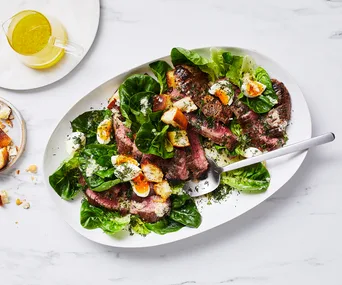Charred, blushing and delicious, well-butchered beef has long been a dining centrepiece. Understanding the different cuts of beef is essential to ensure your steak is sizzling with the perfect sear. So, we’ve taken the guesswork out of selecting your types of steak by talking to those who know best.
Who knows their way around a steak better than the executive chef of some of Sydney’s finest steak restaurants? Chef Pip Pratt heads up The Gidley, Bistecca and Alfie’s, and certainly knows his secondary cuts from the prime. With an impressive wet-ageing facility housed within Alfie’s, Pratt ensures butchery and cooking across all venues is top end so that guests are served nothing but prime beef. Across the border in Victoria, Ash McBean of G McBean Family Butcher is a fifth-generation butcher, born bred and raised around beef and butchering. You’ll find her behind the counter alongside her father, Gavin McBean, at the pair’s flash butcher located inside Prahran Market.
So, whether you like your steak cooked blue or medium-rare, prefer a high-fat content or something a bit leaner, want to weigh up whether that T-bone or rib-eye steak is worth it, or are simply a steak lover, this is your guide to the best types of steaks.
What are the different types of steak?
T-bone steak

This hefty steak packs two different textures and flavour experiences – a tender fillet muscle on the smaller side of the bone and a juicy sirloin on the other. “The bone is left in for moisture retention. And essentially, it really helps flavour the meat,” says Pratt. These T-shaped steaks vary in size depending on where in the short loin they are cut from, and the bone also helps conduct heat while being cooked. On menus you may see it listed as bistecca alla Fiorentina; or porterhouse with fillet. As with any steak, cooking and resting are equally important. But for the ultimate home-cooked steak (T-bone or any other cut) McBean recommends seasoning it the day before cooking. “Salt your steak the day before you cook it, and lay it on a rack in the fridge. It’s almost like dry-ageing it,” she says. “I won’t eat a steak without doing that, it’s a game changer.”
Eye fillet steak
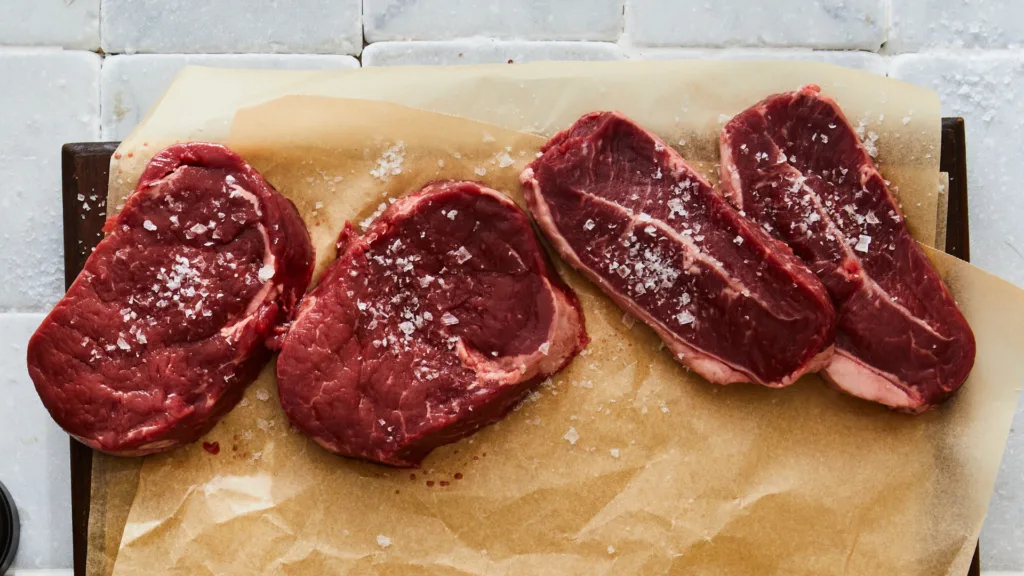
This lean and tender cut is taken from beneath the sirloin, and is also known as filet mignon or chateaubriand. “Eye fillet is taken towards the tail end of the cow on the underside. So it’s sort of where all the facilities and the kidneys are and so it doesn’t do a lot of work, so it’s always very, very tender,” says McBean. It can be bought as a single long piece, or it can be cut into round steaks. “It’s extremely tender, really easy to eat and doesn’t have any resistance whatsoever,” says McBean. It has a grassy, lean and less “meaty” flavour profile, that’s more delicate on the palate and texturally soft. When it comes to buying this top end fillet, it’s important to know where beef comes from to ensure you’re getting good quality meat. “It’s important to just have a conversation with your butcher to find out where your meat comes from. Most butchers are more than happy to talk about that, and if not, it’s time to find a new butcher,” says McBean.
Flat iron steak
This delicious but lesser-loved steak is cut from the oyster blade. While the shoulder is traditionally a braising cut (as it holds up much of the weight of the cow) when trimmed this cut comes good for grilling. “Flat iron is an interesting one,” explains McBean. “The whole muscle itself is called an oyster blade. And that’s beautiful for slow cooking, it breaks down really nicely and it’s got awesome flavour. But if you trim out all the sinew and all the fat, it’s essentially two muscles that sit on top of each other. And that’s the flat iron.”
Sirloin steak

Also known as a porterhouse and New York strip, the sirloin is taken from the posterior quarter of the cow. “That same muscle that travels along the backbone eventually turns into the striploin and porterhouse. So it’s all one great big muscle, it just depends on which rib it started with. And that’ll determine what it’s called,” says McBean. It’s one of the more affordable premium cuts of steak, and thanks to its prime combination of flavour and texture, it doesn’t require much effort to cook it. “You get a lot more of the flavour from the fat on the outside cap of it, so you want to keep as much of that intact as you possibly can,” says Pratt. “It’s also got a little bit of sinew which has a bit of chew and gnarliness in the edge.” Pratt recommends cooking sirloin over a wood-fire where possible.
“It creates that intense heat and allows that slightly smoky crust to develop, and we just season it with salt and pepper. And a tiny bit of beef fat just to help conduct the heat.”
Scotch fillet steak and rib-eye steak on the bone
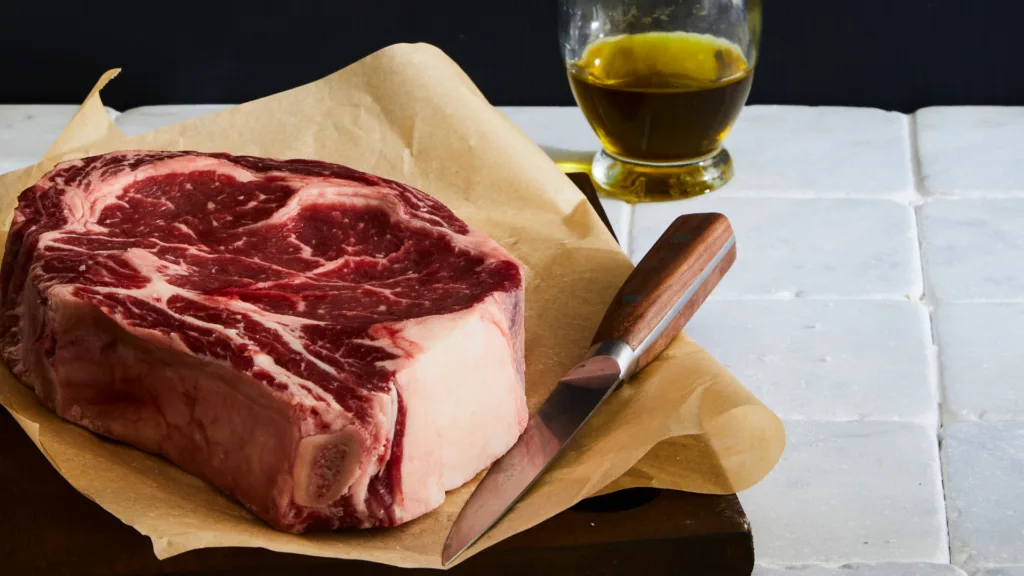
Also known as boneless rib-eye or rib fillet, the Scotch fillet is one of the most prominent steak cuts in restaurants. “It’s essentially the first steak in the entire backstrap of the cow before sirloin. Scotch is the same as a rib-eye, depending on whether it’s on the bone or not,” says McBean. Thanks to a nugget of fat in the centre and natural intramuscular fat (or marbling) it has an excellent buttery flavour.
A rib-eye on the bone is also known as a côte de boeuf, while a flashy tomahawk is just a rib-eye with a long bone left in. “While it’s good to have a bit of bone for flavour, to be honest, having the whole bone is
a complete waste of time because you’re paying for the weight of bone, which won’t impact the flavour,” says Pratt.
Secondary cuts of steak
Rump, flank, hanger and skirt steaks are all flavourful steaks, that when cooked correctly offer excellent flavour. “For many of these cuts, it really depends on how you slice the steak once it’s cooked so it’s tender,” says McBean. “If you’re cutting against the grain, you’re breaking up those muscle fibres and it’s gonna break down in the mouth a lot more easily.” Often marinating these cuts of steak will ensure the flavour is on point.
What does ageing do to a steak?
Dry-ageing steak
To develop its flavour, meat can be aged in a humidity-, airflow- and temperature-controlled environment. “What that does is over time it draws out the moisture. With that, the enzymes in the proteins break down. So you get a much more tender steak,” says McBean. Traditionally it was a practice of many butcheries, before going out of style in the ’80s and ’90s in response to people’s fear of fat (to dry-age, a piece of meat needs fat on it: it needs to be both marbled inside the muscles; and plenty of fat on the outside to protect it). Typically dry-aged meat is more expensive as it loses the water weight increasing the cost by weight; and then you factor in the labour and time. “People are divided on whether they like it or not,” says McBean. “It gives the meat a stronger, funkier flavour, which I love and a lot of our customers love.”
Wet-ageing steak
Alongside the increasingly popular method of dry-ageing beef, the process of wet-ageing is gaining traction. “After the animal is dispatched it gets broken down, it then gets vacuum packed under pressure. That pressure helps preserve it for longer, and also works to break down the muscle fibres and helps tenderise the meat,” says Pratt. Meat is kept under pressure within its juices to develop its flavour and can be finished off using a traditional dry-ageing method.


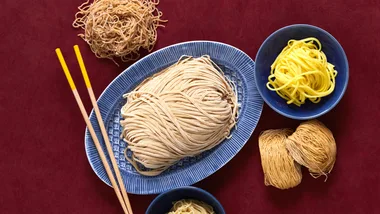

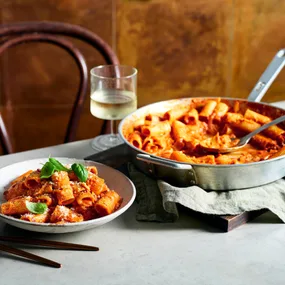
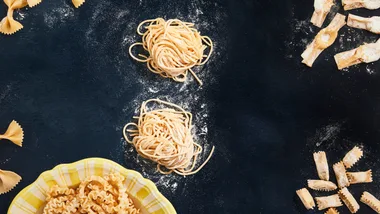
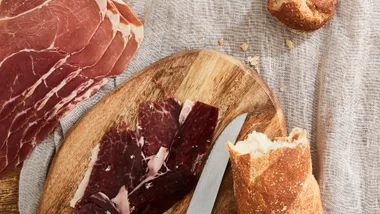

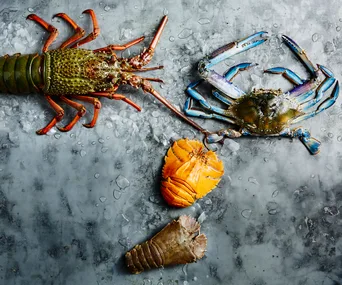


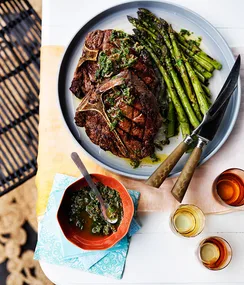
.png?resize=380%2C285)
